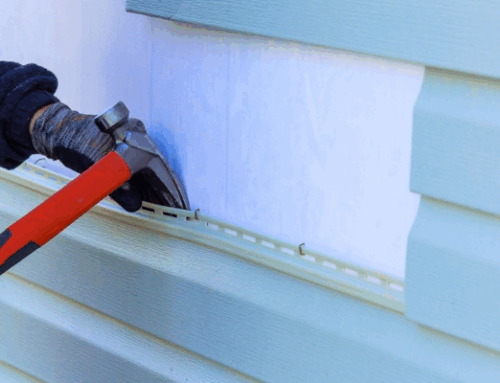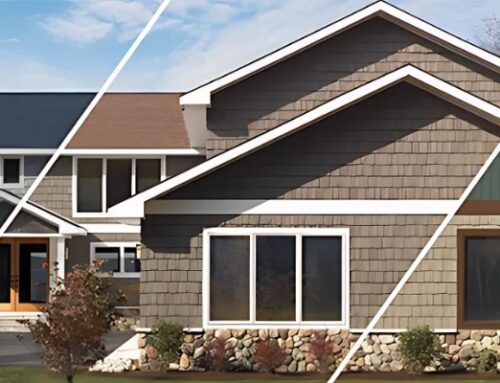Your home’s siding is not only about curbing its appeal; it is also an important shieldand your home’smost valuable investment.
You might not give your siding much thought—until suddenly, it’s cracked, warped, or covered in mold. And by then, the damage is often worse (and pricier to fix) than you’d think.
The truth? Most siding fails long before it should because of preventable issues. We have seen homeowners blow thousands on replacements when a simple fix could’ve bought them years. (Ever notice how one house’s siding lasts decades while the neighbor’s peels after five years? It’s rarely just bad luck.)
Here’s what’s destroying siding behind the scenes—and exactly how to protect yours:
Are you aware of all possible threats to your siding? Many homeowners are surprised to learn about the diverse problems that can cause wear and tear. In this broad guide, we are going to dive deeply into 7 common causes of siding damage.
1. Moisture Infiltration
You can’t see rot (until it’s too late):
- The water penetrates into the wooden framing like an uninvited guest, gradually eating into the structure from within. As long as you notice the smell of soft spots or that specific soil, the damage is often widespread and expensive to fix. Even worse?
- The toxic black mold that often tags can cause serious health risks for your family.
Deformed and twisted siding:
- Ever noticed how the vinyl panels sometimes look waving, or the wood siding develops an odd bulge? This stuck moisture is forcing the material to bend against its will. These deformities are not just cosmetic – they create new entry points for even more water, intensifying the damage cycle. It is as if your siding develops its own set of leaks!
- Peeling paint and stains – bubbling paint or dark stains signal moisture under the surfaces, which often deteriorate over time.
- Musty Odors and allergies – moist walls promote mold, which releases air seeds that trigger respiratory issues.
Pro Tip: Check for soft spots or moisture around windows and seams – Early detection prevents expensive repair.
Prevention Solutions:
- Specify premium woven polypropylene house wrap for optimal moisture vapor transmission without liquid water penetration.
2. Temperature Fluctuations
- Vinyl siding naturally expands with a change in daily temperature and contracts, which can gradually lose fans over time.
- Fiber cement siding can develop small stress cracks when the temperature suddenly falls, possibly affect the ability to protect your home.
Prevention Solutions:
- Select engineered wood siding with factory-applied primer on all six surfaces and integrated moisture-resistant backer boards.
3. UV Radiation Damage
- Ultraviolet radiation breaks down vinyl polymer chains at a molecular level, causing embrittlement that typically manifests as cracking within 8-12 years of exposure
- Faded siding surfaces lose their original impact resistance due to UV degradation of plasticizers and stabilizers in the material matrix
- Southwest-facing elevations receive nearly double the UV dosage of north-facing walls, with this differential being particularly pronounced in summer months
- While reflective metal and white surfaces generally outperform darker colors, even these degrade over time as UV radiation breaks down paint systems and clear coats
Prevention Solutions:
- Specify vinyl siding products containing titanium dioxide UV stabilizers for maximum protection
- Install heavy-gauge aluminum trim coils above all vulnerable horizontal surfaces to shield underlying materials
- Consider advanced polymer siding options using furniture-grade polypropylene resins that inherently resist UV degradation better than standard PVC.
4. Ice Dam Effects
- Massive icicles forming along eaves add tremendous weight, creating significant stress on siding attachments
- The freeze-thaw cycle during winter storms forces meltwater beneath siding materials through capillary action.
Prevention Solutions:
- Use professional-grade systems with built-in thermostats, and install self-regulating roof heating cables with eaves before winter.
- Upgrade attic insulation with fiberglass to reduce heat transfer.
- Apply a premium ice-and-water shield membrane under the roof material during replacement.
- Traditional metal drip edges replace the flexible rubber versions that encounter extreme temperature swings without cracks.
5. Pest Infestations
Common Pests That Damage Siding:
- Carpenter bees drill clean round holes in untreated wood siding, tunnel deeper over time. These holes get bigger because they keep coming back year to year.
- Termites can silently destroy wood siding from the inside out. They often enter where the siding touches the ground or foundation.
- Woodpeckers peck rapidly at siding when they hear insects inside. They leave lines of small holes behind while hunting for food.
Prevention Solutions:
- Install borate-treated wood siding or advanced polymer composites containing insect-repelling additives throughout vulnerable areas.
- Incorporate gauge stainless steel mesh behind siding at potential entry points, particularly near rooflines and utility penetrations.
- Select textured vinyl siding profiles with irregular surface patterns that deter animal climbing and chewing behaviors.
6. Poor Installation
- Over-driven fasteners compress vinyl siding panels. This creates stress points that cause 60% of early failures in the first ten years.
- Poor lapping techniques let water in during about 33% of siding installations. This problem often goes unnoticed for years.
Prevention Solutions:
- Inspect all interlocking seams during installation to ensure proper overlaps with positive drainage channels.
7. Growth of Mold and Mildew
- Black mold spores begin the colonies within hours when the humidity remains above 60%, feeding on organic materials in wood and fiber cement siding.
- North-supporting walls and shaded areas maintain long-term moist conditions, developing thick mold mats that stain surfaces and degrade the adhesive.
- Automatic sprinkler systems that regularly make wet siding surfaces an ideal breeding basis, especially when water pools in overlapping seams.
- Some siding colors (especially dark greens and gray) camouflage mold development for months.
Prevention Solutions:
- Install zinc or copper flashing strips along the base course – these metals naturally inhibit microbial growth through ionization
- Apply mold-resistant primers containing EPA-registered fungicides before painting, reapplying every 5-7 years for maximum protection
- For wood siding, specify pressure-treated lumber infused with alkaline copper quaternary preservatives that resist fungal penetration
- Position dehumidifiers in crawl spaces during humid months, maintaining relative humidity to create inhospitable conditions
Conclusion
Protecting the siding of your home is a sustainable commitment, but it is one that pays a significant dividend in the long run.
Understanding the weaknesses is the first step towards your home to ensure that it is beautiful and well preserved.
By taking an active approach to inspect your siding regularly, address minor issues rapidly, and implement the preventive measures we discussed, you can extend your lifetime and avoid very large, more expensive repairs below the road.






